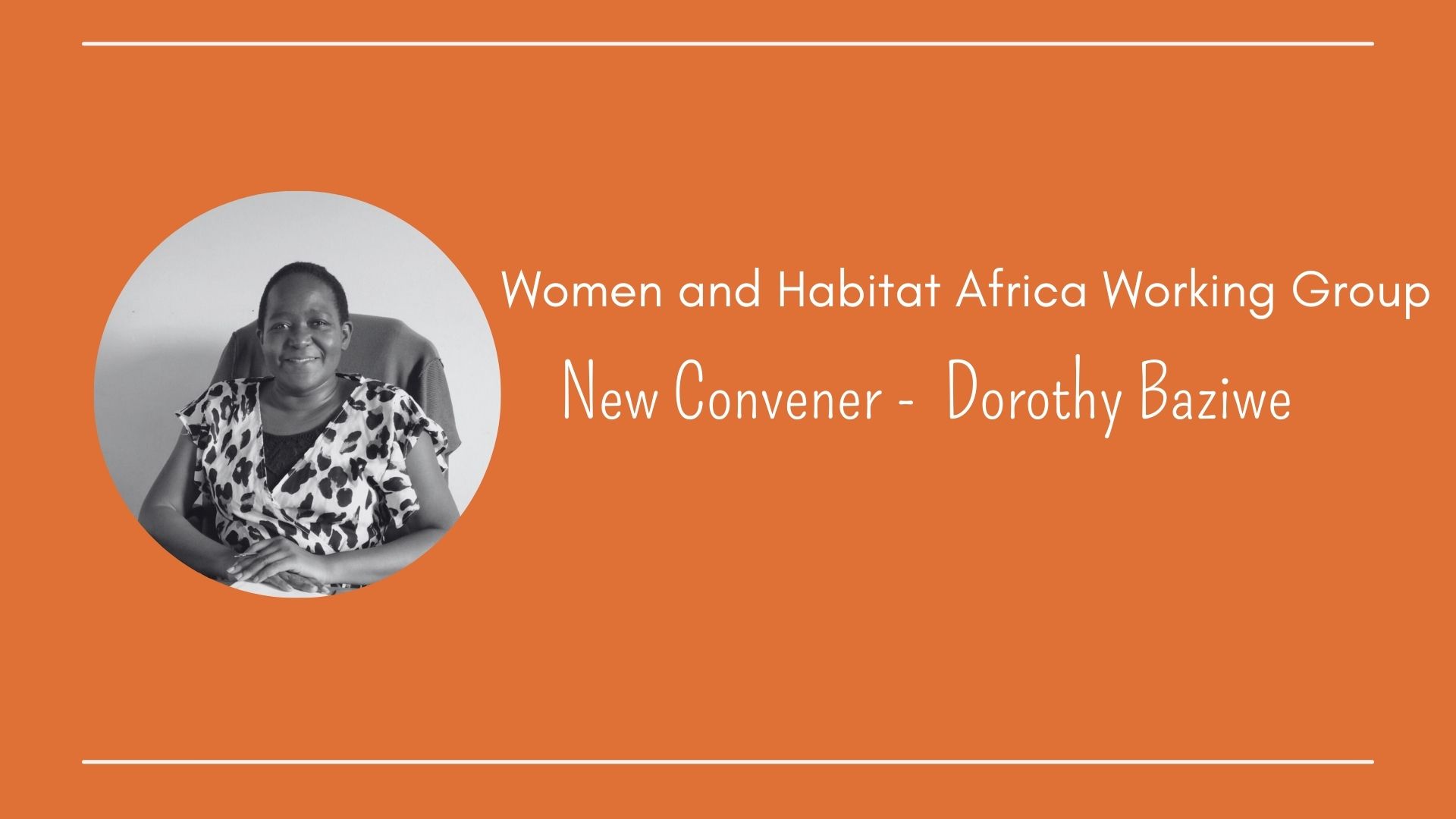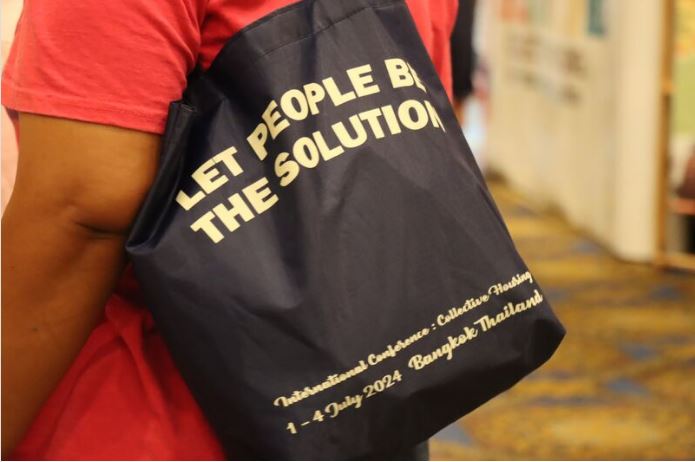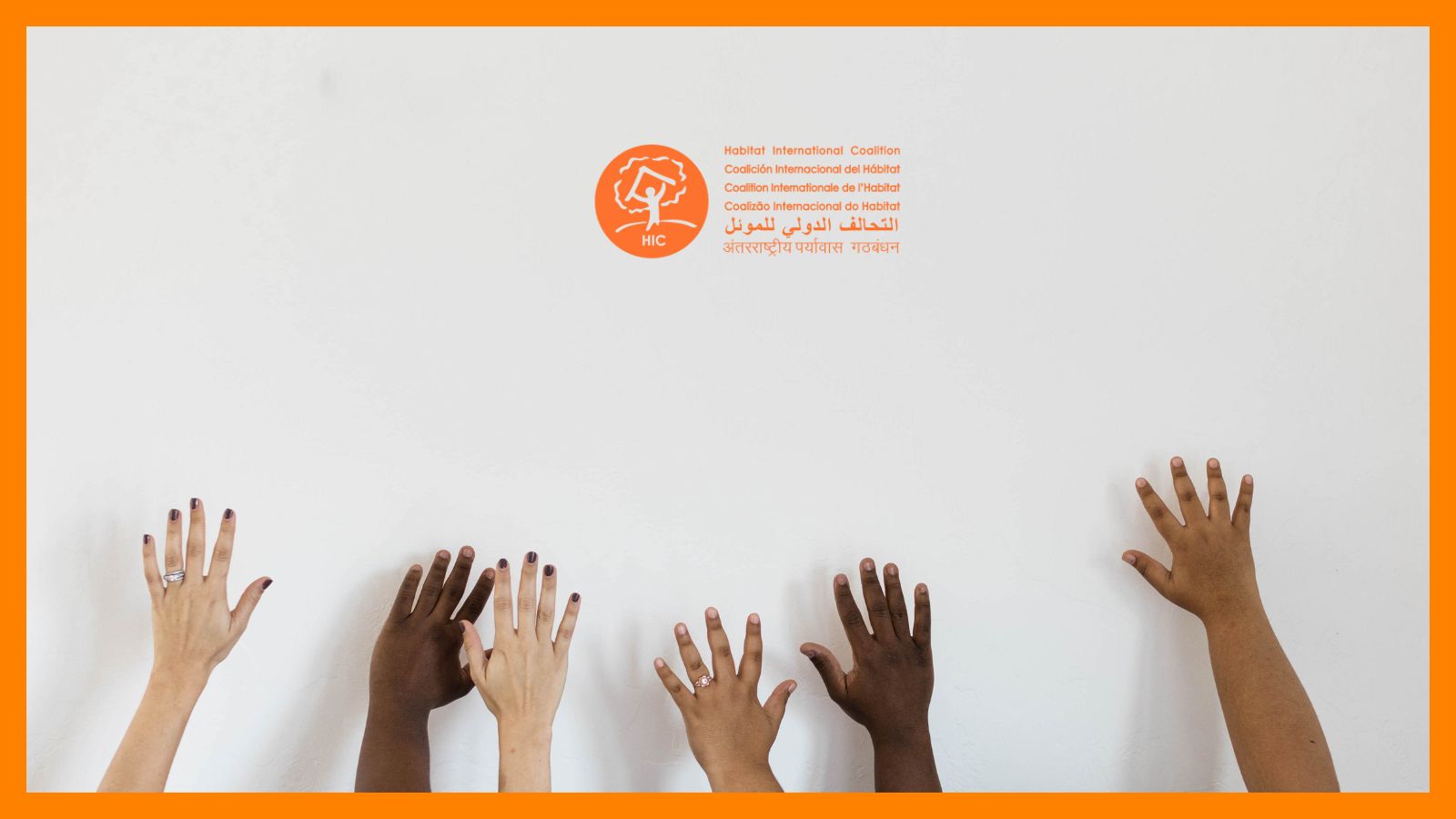Statement by Davinder Lamba for HIC President Election
It is with
pleasure that I present this statement to HIC Members as candidate for the HIC
President Election. This statement elaborates on the local and global
orientation of my organization as well as my own, why we are affiliated with HIC,
and why HIC and we struggle for the realization of human dignity, participatory
governance and a sustainable habitat and environment. I conclude by drawing out
HIC organizational matters of priority that will require the attention of all
parts of the Coalition, including the President. Lastly, I comment on
fulfilling the “Position
description for HIC the President”, in terms of the services, activities and
responsibilities expected to advance the functions and mission of HIC. I also urge
the members to examine an important founding document.
Our orientation is local and global
The
orientation my organization and I is local and global. This is because within
and beyond our national border, we interact with multiple actors and in various
arenas in order to advance the struggle for the realization of human dignity for
many rather than just a few—women, men,
youth and children—, participatory governance, starting ‘springs’ of freedom
and ending ‘winters’ of oppression, and sustainable habitat and environment for
all.
We integrate
knowledge and practice in order to advance these ends and to collaborate with
others–individuals, communities, organizations and movements that strive for
the same. This is our work and figures
in my resume.
Why my organization and I are involved with HIC
We are involved
with HIC because it is a coalition that struggles for the realization of human
dignity and participatory governance everywhere, and for sustainable habitat
and environment for all. Toward these ends, HIC articulates with multiple
social actors, builds capacities and promotes initiatives in a diversity of contexts
within and beyond national borders, and builds alliances with all those seeking
and creating alternatives. In other words, HIC amplifies the voices of the
local at the global. HIC is not just an international organization; it is a
global coalition that is anchored to local realities/ struggles.
Dignity, governance, habitat and environment
Why human
dignity? Because it is the philosophical and juridical basis of all human
rights: political, civil, economic, social and cultural. This is why HIC is
human rights oriented, in principle and practice.
Why participatory
governance? Because it requires that people gain a voice in decisions and thus,
are able to exercise power, in principle and practice. This is why HIC is
politically-oriented.
Why habitat?
Because habitat is the zone of interaction of participants in a social process
or the super arena in which they shape (produce) and share (distribute),
equitably or inequitably, human well-being, wealth, enlightenment, power and so
on, the base values that people strive for everywhere. Habitat is more than a
house. This is why HIC is habitat–and not just ‘house’- oriented.
Why the environment? Because it includes all
the living and non-living things on Earth. The environment is very vast and humans’
habitats are part of it. The elements that affect the environment, like climate
change, also affect habitat and its inhabitants: more often those who are worse-off,
less than the well off generally. This is why HIC is environment-oriented.
Human
well-being and habitat are interrelated, and habitat and environment are interrelated.
Consequently, well-being and the environment
are interrelated. Well-being is a constituent of human dignity and it is generally
inherent in human rights. HIC propagated this basic fact at the Earth Summit,
Rio in 1992 and the World Summit on Sustainable Development, Johannesburg in
2002. The next opportunity to reiterate this basic fact will be the Rio+20 Conference
in 2012.
HIC organizational matters of priority
There are
different ways of thinking about organizations. My way is systemic: it requires
thinking about four inter-related elements. They are composition, structure,
mechanisms and environment. I will use this framework to draw out HIC
organizational matters of priority that will require the attention of all parts
of HIC from now onwards.
Composition
HIC is composed of several elements that
include Members, the General Assembly, Board (including the Executive Committee),
General Secretariat, Thematic Networks and Secretariats, Focal Points and
Working Groups. At the HIC Board meeting in Dakar, it was decided that the Women,
Habitat Network (WAHN), Habitat and Sustainable Network (HSEN) will cease as
networks as they were not functioning as such, but the themes and the corresponding
representatives in the Board will remain as Committees (issue foreseen by the
Constitution). The Thematic Network that will continue to exist as a network is
the Housing and Land Rights Network (HLRN) because it is functioning.
Coordination at regional level will also
require attention as the Focal Points of the approved regions of HIC -except in
Latin American and Middle East and North Africa (MENA)- do not operate as
intended. This matter continuously affects the election of Regional
Representatives to the HIC Board, and matters of operational coordination within
HIC structure.
A new component,
which has emerged, is the HIC Academy or HICademy as we call it, including HIC
Wisdom Keepers. I advanced the concept on assuming the presidency in 2007. It is
meant to be a virtual institute and it is in the development stages, as I
elaborated in my term of
office report.
Structure
The HIC organizational structure
consists of an apex, that is, the General Assembly and Board (governance level)
and operating core, that is, the General Secretariat (management level). The
focal points, network and committees (social production) are accountable to the
Board.
HLRN has its own apex (committee) and
operating core or secretariat, and it is accountable to the Board. The Latin
American and MENA Focal Points have their own operating cores.
The matter
that will require attention is the implementation of the HIC Coordination Plan
(see Report of the Art-HIC-ulation Workshop, Barcelona, July 2010). The intent
of the Coordination Plan is to address, in the best way possible, the fact that
there are various operating cores in the HIC structure, which are the product
of our history and practice, and not clearly dealt with in the Constitution; as
a whole, they create internal and external coordination, and sometimes a common
identity, problematic. This matter will require the attention of those of us
who are centers of the various operating cores of the HIC structure. We must
accomplish an efficient and effective global coordination plan and practice.
Mechanisms
Mechanisms explain what an entity is and
how it works. The statutory mechanism of HIC is its Constitution and HIC Presidential, Board
Election and Representation By-Laws. Article 8 of the Constitution defines the
composition of the Board as follows: President, Regional representatives (1 per
approved region), Committee representatives (1 each for HLRN and HSEN and 3 for
WAS– later named WAHN), Social Movements’ representatives (2) and Associated Member
(1).
For the HIC Board, that is, the
governance component to work effectively requires an adequate and reasonably
even membership base to enable members to elect regional and Committee representatives
as required by the statutes.
I would like to note that HIC membership
in the African region has grown, it is strong in the Latin American region, and
the progress in the MENA region is good. However, more effort is required to
increase the membership in the Asian, European and North American regions.
I would like
to take this opportunity to congratulate the HIC General Secretariat for
developing and putting into operation the tool ‘Member Space’ that will enable
members to engage in HIC affairs more effectively.
Environment
The
environment of HIC is the collection of external items that influence the
Coalition and those that it acts upon as a transnational organization. What are
these items? One category is that of actors. HIC, in part and as a whole, interacts
with a multiplicity of actors. The types of actors are numerous and comprise:
HIC donors/ funders, like Misereor, the Ford Foundation, ACCD, ICCO, Brot fur
die Welt, the Tata Foundation, the Rosa Luxemburg Foundation, among others;
individuals, communities, organizations, coalitions and movements that are in
the circle of HIC. Here I would like to single out the World Social Forum, a
local-global forum in which HIC and many of its members are active
participants; governments, intergovernmental organizations—like the UN, supranational
organizations—like the WTO or International Criminal Court and so on that
affect or are affected by HIC; people or communities who are the victims of
involuntary displacement and forced evictions, and whose human rights HIC
defends. There are more but I will stop here.
All actors
have their individual perspectives, composed of their identity—territorial,
ideological, cultural and so on, on the basis of which they make demands on
themselves and others, and have expectations, whether they can be fulfilled or
not. HIC, as a transnational actor, has its own perspective that either
diverges or converges with the perspectives of the actors in HIC’s environment.
Understanding, diagnosing and acting on the environment as a whole, that is,
the collection of external items that act or acted upon by an organization, is
a strategic way of thinking and an action-oriented task of the leadership. I
have shown just a slice of this reality.
Fulfilling HIC position description for President
There are
HIC position descriptions for all posts: President, Board Members, General
Secretary, Thematic Coordinator and Focal Point/Regional Coordinator. The description
includes the services, activities and responsibilities expected to advance the
functions and mission of HIC. I have fulfilled the expectations, as members
will note from my term of office report as HIC President (2007—2011). The report
is detailed enough for members to make their own assessment of my performance.
I will do my best if elected for the second term. In closing, I urge the
members to examine one of the HIC Founding Documents
to gain a deeper understanding of the substantive discourse that has transpired
in HIC. Refer to the HIC website to read “HIC Organizational
Structure: Context and Background, Philosophy, Principles and Objectives”,
published in 1997.
Davinder Lamba, Nairobi, Kenya, July 2011


